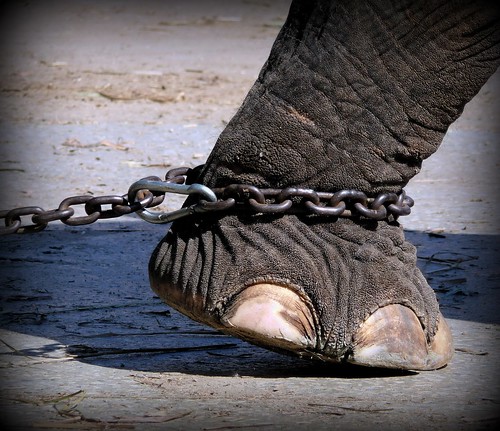I just finished reading Seth Godin’s new book Linchpin: Are You Indispensable?. Seth shows how the white-collar jobs, which supposed to save the middle class are being eliminated either by machines or outsourcing with cheap labors. He shows that you can either continue to live your life as a faceless cog or choose to become Linchpin. Here are some of the lessons I learned from this book:
Industrial Revolution is Over

This book shows the industrial revolution is changing and in order to survive in the new era of economy, you have to become linchpin or indispensable. In last three hundred years, the industrialization began by standardizing the tasks so that it can be performed by easily replaceable labor or so called cogs. It relied on two layers: management and labor, where management breaks production of goods into tiny tasks, which are performed by the labor. The management wins when it can get the most work for the least pay. The system taught workers to follow the instructions and you don’t have to think. Though, that system worked but has been falling apart in the face of competition, outsourcing and globalization. The attendance-based compensation (ABC) is over. Th old American dream that taught to keep your head down, follow instructions, work hard and you will be rewarded is dead. The mass production treats everything such as labor and material as interchangeable. However, in global market, the competition is fierce and cheap strategy doesn’t scale very well.
Instead of easily replaced laborers or cogs, you can choose to become Linchpin by differentiating yourself from the rest and focusing on humanity, connection and art. The web has made it easier to be productive and create or invent. The new American dream is to be remarkable, generous, create art and connect with people.
Education System is a Sham

In capitalist market, the companies make money by hiring obedient and competent workers as cheaply as you can and using productivity advantage to earn more profit. Andrew Carnegie saw that limited amount of education to get them to cooperate. The school system throughout the world encourages mediocre obedience and is driven by fear as when we learn things in fear. Seth shows public school system is designed to prepare us for factories, where we are just replaceable cogs and care little about our jobs or customers. The same factory model created consumer culture that uses consumption as a shortcut to happniess. Instead, school should teach solving interesting problems and leading.
Becoming a Linchpin

In order to become a linchpin or indispensable, you must embrace an artist and genius within you. Seth recommends avoiding asympototic goals such as bowling, where there is a ceiling of how good you can be. Also, for an artist, the economy is not just zero sum game, instead he/she can increase the pie. Seth cites Richard Florida’s survey of top ten reason for employees to do best work as follows:
- challenge and responsibility
- flexibility
- stable work environment
- money
- professional development
- peer recognition
- stimulatng colleagues and bosses
- exciting job content
- organization culture
- location and community
All of above reasons except money are internal that we can control. Seth encourages readers to find the work that suits your passion. He uses Emotional labor term, originally coined by Arlie Hochschild to connect with the work. Though, you may get a little compensation in return of emotional labor, but you get inward reward. Instead of day’s work for day’s job or the poverty mentality that treats life as zero sum game, you give gift and build bonds. Seth shows that the easier work is to quantify, the less it’s worth and more humanity you bring to your work, the better results you will receive. Seth cites Krulak’s law for building strong relations with your customers, i.e.,
Resistance to Change

Seth gives plenty of examples and demonstrates that real artists ship, however shipping is hard due to trashing/tweaking and coordination. According to Seth, the biggest resistance to the change is our lizard brain. He explains how we all have two brains: primeval brain or lizard brain and gray matter or recently developed brain. The lizard brain has animal instincts such as hungry, scared, angry and horny, whereas newer brain allows big thoughts, generosity, speech, and art. Lizard brain seek compfort and obedience, and avoids risks, public speaking and generosity.
Good is enemy of perfect

Seth encourages readers to become excellent and not perfect as art is never defect-free. He cites Bre Pettis, who says that there are three states of being: not knowing, action and completion. He says accept that everything is draft as it helps to get it done.
Generosity

Exchanging gifts is an ancient tradition. Seth shows that artists who give gifts win as becoming a linchpin is not an act of selfishness. Seth also shows how usury was prohibited in Bible as interest-free loan was kind of gift. This changed when Martin Luther lifted the sanction to get support for the Protestant Reformation. Seth writes:
Seth cites Metcalfe’s law states that the value of a network increases with the square of the number of nodes on the network. The new social media platforms such as Twitter, Facebook, Blogsphere, and Internet is changing the circle of the gift system and he shows that there are three cicles of gifts, the first circle represents true gifts to family and friends. The second circle is for commerce, they pay for souvenir edition and the third circle is your tribe, followers, fans or friendlies.
There is no map

Seeing the future is hard because we are attached to the world and want stability and fear change. Seth gives plenty of examples of record industry and newspaper industry who have been too attached with their legacy model and failed to adjust in the new economy. In order to become linchpin, you need to draw a map and lead instead of being passive. You need to find a job that matches your passion.
Culture of connections

The industrialization removed human connection between different parties. The social media and Internet is changing that, now companies can connect directly with their customers and receive their input. Often, when companies negotiate with other companies, the key point of distinction is the perceived connection between the prospect and the organization. The salesman who relies only on the script would fail, instead you have to rely on honest signals and genuine gifts to make connections.
Seven attributes of Linchpin
Linchpins are geniuses, artists and givers of gifts, who extert emotional labor and make their own map. Here are seven abilities of the linchin:
- Providing a unique interface between members of the organization
- Delivering unique creativity
- Managing a situation or organization of great complexity
- Leading customers
- Inspiring staff
- Providing deep domain knowledge
- Possessing a unique talent
Conclusion
We have been in declining economy for a while and many of the white collar and blue collar jobs lost in last few years won’t come back. I found a lot of Seth’s advice similar to agile movement in software development and My Job Went to India. I also wrote about Taylorism in my blog IT Sweatshops, where I deplored Taylorism based command and control structure in a lot of companies even the one that claim to adopt agile methodologies. Seth even says that you don’t need a resume as it hides the fact that you are linchpin. Instead have a project that an employer can see or blog that people can follow. I find this book offers very practical and timely advice for future market. In the job market, You need to differentiate yourself and have a trail of breadcrumbs of your previous work. Being an average is over, instead you have to be a linchpin and live without a map.